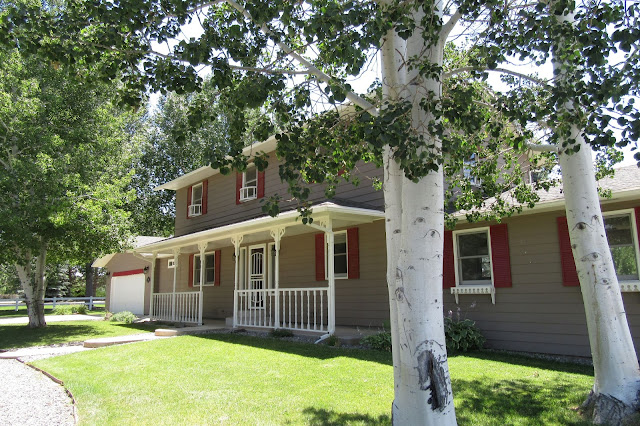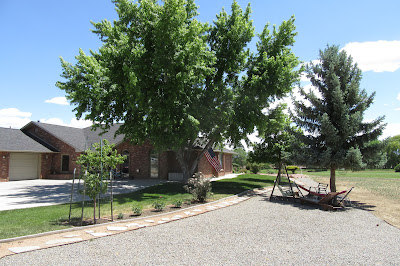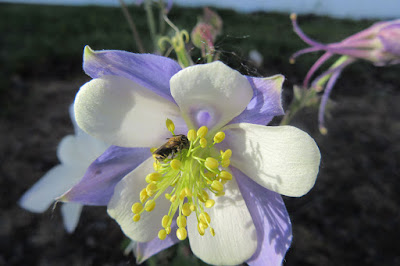Bees, butterflies, moths and other insects – we see them among the flowers but give them little thought. In fact, we owe them a huge debt of gratitude. Without these helpful creatures, our gardens would be devoid of flowers and our tables empty of food. Insect pollinators – along with a handful of birds and animals - are ‘keystone species’, without which many living ecosystems would collapse. That's one good reason to celebrate National Pollinator Week!
Flowering plants have a unique challenge – getting the pollen (microsporangium/ male gamete or male sex cell) to the egg (ovule/ female sex cell; located in the plant ovary) where fertilization can occur. But plants are stationary and ensuring fertilization is no easy matter. In fact, most plants need a little help moving the pollen from the anther (where it’s produced) to the stigma (the female organ that receives the pollen).
Some flowering plants – mostly grasses and conifers – are wind-pollinated; the wind simply blows the pollen from an anther to a stigma. For a very small number of plants, water accomplishes the pollen transfer. But the vast majority of flowering plants depend on living organisms – living pollinators – to ensure that fertilization occurs.
Eighty percent of the world’s food crops are pollinated by animal pollinators. Crops as diverse as apples, cotton, peanuts, soybeans and squash are pollinated by insect pollinators. Without flowering plants our lives would be less colorful, less fragrant – and hungrier. Imagine a world without 80% of our most common agricultural and garden plants!
Several years ago, beekeepers noticed a decline in the number of European Honeybees used to pollinate crops. You may have noticed similar declines in your own garden. ‘Colony Collapse Disorder’, as the Honeybee die-off is called, serves as a wake-up call to all of us. Pollinators are vital to life on earth – and we all must do our part in keeping them safe. By taking a few simple steps (like providing food, water and places to raise their young), home gardeners can help insure there will always be enough pollinators to provide their unique services.
Who are the Pollinators?
The range of pollinators may surprise you. Most common are the bees, flies and wasps. Native bee pollinators range in size from large bumblebees to bees hardly visible with the naked eye (over 946 species in Colorado; between 100 and 200 in Montrose County alone) [1]. Flies and wasps pollinate many native, agricultural and garden plants; butterflies and moths are also important. Many of these pollinators have special adaptations (hairs; pollen sacks) that make them efficient ‘movers of pollen’. If you observe a native plant in bloom, the majority of the insect visitors will be bees, wasps and flies (though it may be difficult to tell them apart).
Beetles, true bugs, ants and hummingbirds are less common pollinators, but their services are vital for certain types of plants. In our area, hummingbirds play an important role in pollinating the trumpet-flowered species we think of as ‘hummingbird plants’. All pollinators are important; many plants are pollinated by several different pollinators. This is so in the wild, in agricultural fields and in our gardens.
Why Do Pollinators Visit Flowers?
The pollinator’s primary foods are pollen and nectar (the sweet syrup made by flowers to attract insects). Flowers attract pollinators with color, scent and other cues. The pollen transfer is often unintentional – a consequence of the pollinator coming in contact with flowering parts in the course of feeding on pollen and nectar. Pollination is actually a by-product of the pollinator’s main task - finding food for themselves and their offspring. The interaction of pollinators and plants is a good example of a mutualistic relationship because both parties benefit from their interactions.
Can’t Honeybees Take Care of Pollination?
No – and for several reasons. First, there are often not enough honeybees to do the job; native pollinators must supplement their services to maintain adequate levels of pollination. Some native pollinators can even work when it’s too cold, hot or damp for honeybees. Native pollinators are well-suited to pollinate plants that cannot be pollinated by honeybees – for example, a number of ‘hummingbird plants’ and other plants that need specialist pollinators. Finally, native pollinators provide an important backup system; if something happens to the honeybees (like Colony Collapse Disorder), other pollinators can take over. For all these reasons we need to attract a range of pollinators to our gardens.
Where do Native Pollinators Live?
The majority of them live in natural places (nature preserves; parks; other natural areas), but native pollinators also live in gardens. Where ever food plants, water and nest sites occur, pollinators will live. As natural areas become more scarce, gardens play an increasingly important role in providing pollinator habitat. When you provide pollinator habitat, you help conserve native pollinators – and also benefit from their services. Your vegetable garden and fruit trees will be more productive as a result of native pollinator visits.
What can I do to Provide Pollinator Habitat?
1. Choose plants that provide quality pollen & nectar. Just follow these simple principles when choosing plants for your garden:
§ Choose local native plants when possible. They have pollen & nectar specifically formulated for our native pollinators. In addition, local native pollinators love them;
§ Choose plants with many small blooms. Often the best have white, pink or yellow flowers;
§ For non-native plants, choose herbs, stone fruits, apples, citrus, berry bushes, melons/squash – or flower/vegetable plants noted as being ‘open-pollinated’ or ‘heirloom’ varieties. When choosing bedding plants, visit the nursery on a sunny day and choose the variety that attracts the most pollinators.
§ Choose plants from the following groups:
o Sunflower family (Asteraceae)
o Mint family (Lamiaceae) – mints, sages & many common kitchen herbs like Rosemary, Sage, Thyme, Basil and Lavender.
o Native Phacelia species
o Rose family (Rosaceae)
o Buckwheat family (Polygonaceae)
o Carrot family (Apiaceae)
o Buckthorn family (Rhamnaceae) including Ceanothus, Rhamnus, Frangula
§ Strive to have something blooming from spring through fall;
§ Plan for flowering area of at least 3 ft x 3 ft per species. In general, the more flowers – the better. Group flowering plants like perennials.
§ Choose trees, shrubs, vines/climbers and annual wildflowers to provide pollinator habitat. Vines, hedge shrubs, trees and espaliers provide many blooms in a small space. A well-chosen tree or shrub can be an important pollinator habitat plant. For more ideas see references 2 through 7, below.
2. Provide nesting sites – only the European Honeybee nests in a hive. Most native pollinators are solitary and nest either in the ground (need a patch of bare ground) or in holes in dead trees. You can purchase or build your own bee houses (search ‘bee house’ on the internet).
3. Provide a source of water – a damp patch of ground, a bird dripper or saucer of water with gravel will do. The water must be shallow enough that the pollinators can easily and safely access it.
4. Limit use of pesticides – most insecticides kill the good insects (including butterflies and other pollinators) along with the bad. Consider using Integrated Pest Management (see our brochure on ‘IPM for the Home Garden’).
5. Encourage your neighbors to garden for pollinators. Our small yards make it impossible to provide adequate pollinator habitat; it takes a neighborhood to create a ‘pollinator haven’.
___________________________________
1. https://www.colorado.edu/cumuseum/sites/default/files/attached-files/the_bees_of_colorado.pdf
3. https://www.pollinator.org/PDFs/Guides/ColoradoPlateaurx3FINAL.pdf
5. https://www.pollinator.org/pollinator.org/assets/generalFiles/S.RockyMt.Steppe.rx2_171017_091234.pdf
7. https://www.pollinator.org/PDFs/Guides/Hummingbird_Guide_CO-WY-SD.pdf
_____________________________________________
We welcome your comments (below). You can also send your questions to: monaturesmontrosegarden@gmail.com


























